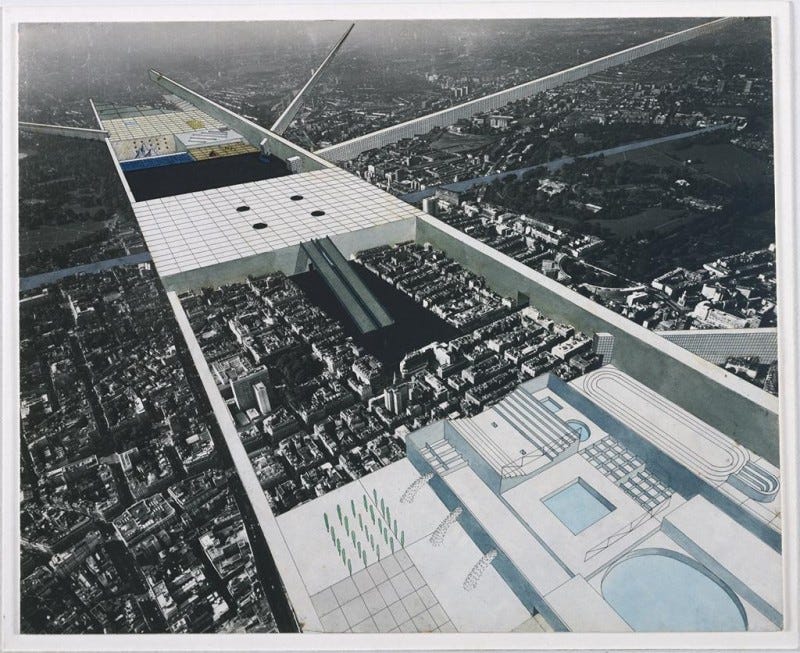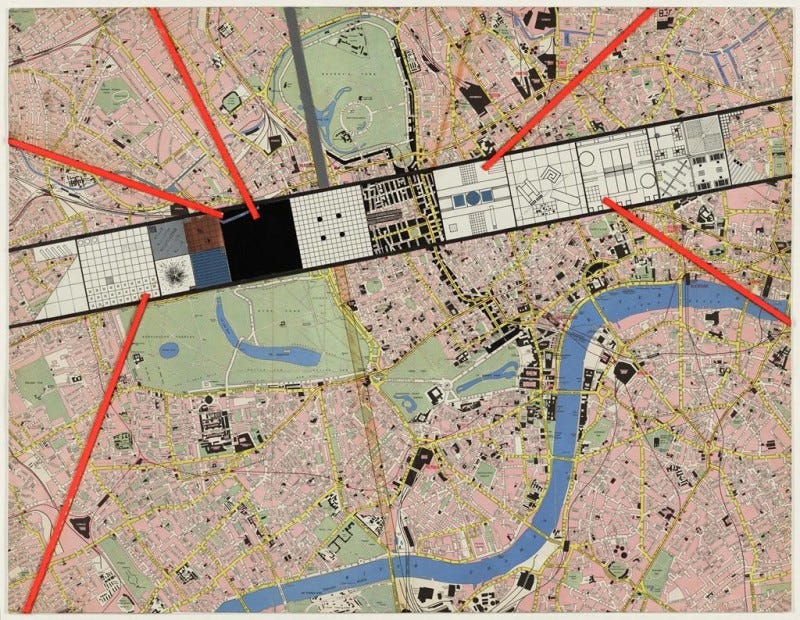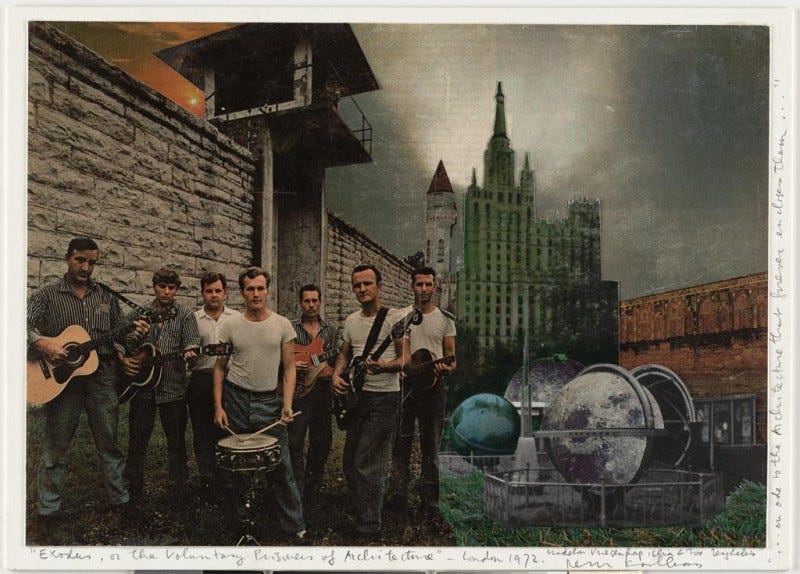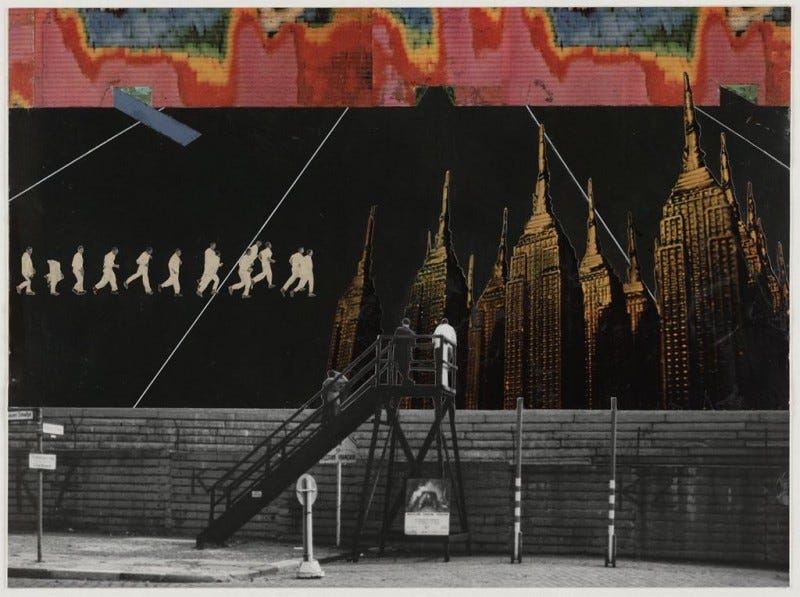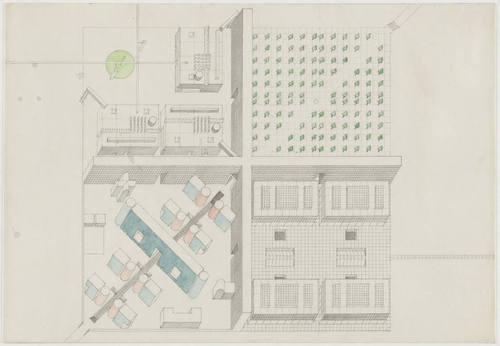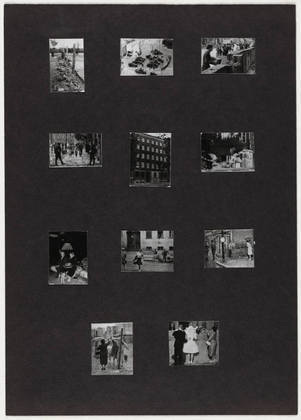Walls of Paradox: Architecture’s Role in Division, Liberation, and Control
Exploring Rem Koolhaas’s “Exodus” and the Unseen Power of Design to Shape, Constrain, and Liberate Human Experience.
Can a wall, so seemingly inert, carry the weight of a thousand unspoken truths? A wall creates a space, yes—but it also divides, alienates, and separates. Its meaning transcends its physicality, shaping the way humans behave and perceive their surroundings.
Take a window, for instance—our eternal connection to the outside world. Through it, sunlight pours in, nature peeks through, and vistas unfold. Yet change the context, and its meaning twists dramatically. In a prison, the window is no longer a liberating threshold but a cruel reminder of what lies beyond reach—a symbol of confinement and longing.
Another radical movement’s project that breaks the barrier of rationality is Rem Koolhaas’s Exodus, or the Voluntary Prisoners of Architecture. Inspired by the Berlin Wall, the project is a speculative manifesto that defies rationality, marrying modernist utopias, dystopian literature, and architectural critique into a haunting, thought provoking series of 18 drawings and collages.
Koolhaas describes Berlin’s division as:
“Once, a city was divided in two parts. One part became the Good Half, the other part the Bad Half.
The inhabitants of the Bad Half began to flock to the good part of the divided city, rapidly swelling into an urban exodus.
If this situation had been allowed to continue forever, the population of the Good Half would have doubled, while the Bad Half would have turned into a ghost town.”
Here, the Berlin Wall is no mere structure. It is an ideological incision, slicing a city into two contradictory worlds. During the Cold War, it embodied the tension between freedom and oppression, hope and despair. Strings of barbed wire and towering slabs of concrete barred movement, locking residents into a restricted enclave. Yet its physical presence was only the tip of its power—its psychological impact was infinitely greater.
On one side, hopelessness blanketed daily existence; on the other, an exodus of ambition swelled into a chaotic urban density. Koolhaas captures architecture’s cruel irony: it becomes, yet again, the instrument of both promise and despair.
This is where architecture fractures reality. A wall is not just a wall, a window not just a window. These elements carry narratives, power, and weight—shaping societies, limiting freedoms, and distorting perceptions. Koolhaas’s Exodus dares to ask: What happens when architecture stops serving humanity and starts ruling it?
Exodus’s proposal and the idea
“Like in West Berlin at the time, the wall becomes here a condition of freedom by self imprisonment.”
- Rem Koolhaas
Exodus envisions a radical architectural intervention—a colossal wall dissecting London’s urban fabric to forge a provocative new culture defined by architectural ingenuity and political rebellion. This "strip," simultaneously a prison and a utopian enclave, offers its inhabitants a paradoxical refuge: a place to escape the chaos and monotony of urban life by voluntarily embracing confinement, i.e., the voluntary imprisonment.
Within this self-imposed captivity, citizens find a space saturated with cultural, intellectual, and recreational experiences—a controlled chaos that flips the script on traditional notions of freedom and imprisonment.
The wall, reminiscent of the Berlin Wall’s haunting symbolism, transforms its negative connotations—division, isolation, inequality, and aggression—into a fertile ground for architectural and social innovation. Koolhaas reframes these destructive forces as tools for reinvention, creating an architecture that challenges the norms of urban life. Here, architecture becomes a weapon, not for war, but for combating the stagnation and banality of contemporary existence.
This architecture rejects the authoritarian sterility of modernist doctrines and the desperate theatrics of their successors. Instead, Koolhaas describes it as a "hedonistic science," a design philosophy that prioritizes individual desires within collective frameworks. The strip, from its exterior, appears as a sequence of austere, monumental forms—a serene façade hiding the sensory overload within. Inside, it pulsates with ornamental frenzy and symbolic overdose, transforming into a "social condenser" that provokes, stimulates, and redefines human interaction.
For its inhabitants, this voluntary imprisonment offers more than shelter—it is an unfiltered encounter with architecture in its purest form. Here, architecture transcends functionality, becoming an active participant in shaping human experience, emotions, and aspirations. It forces its prisoners to grapple with the dualities of freedom and constraint, monotony and ecstasy, structure and chaos.
The Narrative Journey of Exodus
The narrative begins with a stark confrontation: the two enclosing walls, massive and impenetrable, stand as both protectors and barriers. They shield the zone’s integrity, guarding it against the "cancerous organisms" of the outside world. This controlled entry sets the tone for the prisoner’s journey—a passage into an environment of deliberate design and orchestrated intensity. Within these walls, every element, from the smallest symbol to the grandest structure, is a piece of the larger narrative, constructing a world where confinement breeds liberation and isolation fosters a collective euphoria.
In Exodus, the act of entering the strip is not just a physical transition but a psychological metamorphosis, forcing inhabitants to reconcile their roles as both prisoners and pioneers of a new urban existence. It is architecture as manifesto, experiment, and revolution—all rolled into one provocative vision.
Architecture as Power: A Satirical Critique
Through a satirical and exaggerated vision of modernist urban planning, Koolhaas exposes the unsettling power of architecture as a tool for control and social engineering.
The wall in Exodus is not merely a boundary but a mechanism of dominance—imposing restrictions that paradoxically promise liberation. This provocative idea highlights architecture’s capacity to shape society, not only as a space for dwelling but as a medium for governance, manipulation, and coercion.
Koolhaas forces us to confront a critical question: how much autonomy are we willing to sacrifice at the altar of architectural progress?
The Duality of Utopia and Dystopia
The strip embodies the tension between utopia and dystopia — a space that promises cultural fulfillment, intellectual stimulation, and societal order while simultaneously enforcing surveillance, control, and restriction.
Koolhaas blurs these boundaries, suggesting that idealistic visions of architectural salvation can easily veer into oppression. The seductive cultural offerings of the strip mask the cost of escape: voluntary imprisonment.
This duality challenges the assumption that architecture, no matter how visionary, can unilaterally solve societal issues without introducing new layers of complexity and contradiction.
Societal Contradictions: Trading Freedom for Comfort
Exodus’s allure lies in its reflection of a modern paradox—our willingness to exchange freedom for comfort, stimulation, and order.
Koolhaas critiques this passive acceptance of confinement under the guise of progress, questioning whether architecture is complicit in enabling such trade-offs.
The strip stages a cyclic dialectic between exhibitionism and spectatorship, individuality and conformity, echoing the contradictions that define contemporary society. It forces us to reckon with an uncomfortable truth: the line between liberation and control is often razor-thin, especially when architecture becomes a stage for societal spectacle.
A Call to Reflect and Act
Koolhaas’s Exodus remains a speculative manifesto, but its implications resonate powerfully in today’s world. From the digital panopticons of smart cities to gated communities and hyper-curated urban spaces, we continue to grapple with the seductive yet oppressive nature of architectural interventions.
As we confront the challenges of climate change, surveillance capitalism, and increasing urban inequality, Exodus compels us to ask: What kind of urban futures are we building? Are we designing spaces that liberate or confine, empower or control?
Architecture is never neutral. It is a reflection of societal values, a battleground for power, and a blueprint for our collective future.
Let Exodus serve as a reminder that the walls we build—literal or metaphorical—have the power to shape who we are and who we might become.
The question is: will we passively accept these structures, or will we challenge their implications to create a truly equitable and liberated urban condition?
If this exploration of radical architectural thought resonates with you, join me on this journey. I’ll delve into more conceptual projects in the coming weeks—stories that challenge how we see our cities, our spaces, and ourselves. Subscribe to my blog and let’s imagine together.




